Bamboo plant specifications
- Common Name : Lucky bamboo, friendship bamboo, ribbon plant
- Botanical Name : Dracaena sanderiana
- Family : Asparagaceae
- Plant Type : Perennial shrub
- Sun Exposure : Partial shade
- Soil Type : Water or moist but well-drained soil
- Soil pH : Acidic
- Bloom Time : Fall, winter (does not bloom indoors)
- Flower Color : White
- Native Area : Africa
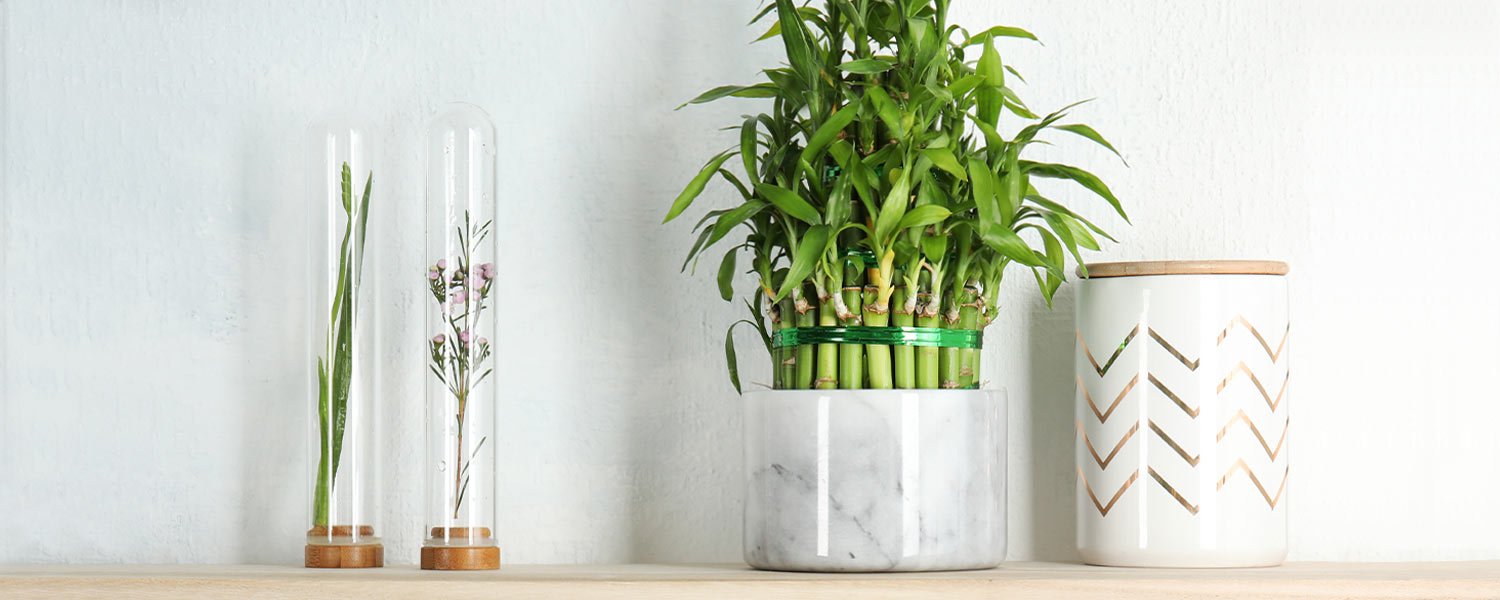
Lucky Bamboo and Chinese Traditions
According to Chinese traditions, the significance of lucky bamboo is tied to how many stalks you have. There are different meanings associated with various lucky bamboo arrangements.
For example :
- Two stalks represent love.
- Three stalks represent Fu (happiness), Lu (wealth), and Soh (long life).
- Five stalks represent balance, peace, harmony, and power in all areas of your life.
- Six stalks represent good luck and wealth.
- Seven stalks represent good health.
- Eight stalks represent growth.
- Nine stalks represent great luck.
- Ten stalks represent perfection.
- Twenty-one stalks represent a powerful blessing.
You’ll rarely find a traditional lucky bamboo arrangement with four stalks. In Chinese culture, the word for “four” is close to the word for “death,” so a gift of four bamboo stalks would be considered very rude as if you had wished death on the recipient.
read more : Everything about lunaria plant : How to Plant & care for them
Lucky Bamboo Care
Lucky bamboo has a well-earned reputation as being nearly indestructible, which makes this plant ideal for novice gardeners or forgetful waterers. You may want to get the light and water levels just right for your lucky bamboo so it thrives. Lucky bamboo is easy to care for as long as you grow it in good quality water.
-
Light
When it comes to light, lucky bamboo prefers bright, filtered sunlight, such as what is found under a rainforest canopy. Avoid direct sunlight as it will scorch the leaves. They are more tolerant of too little light than too much. If the plant begins to stretch, however, or the green fades, provide more light. Rotate your plant often so that the light reaches the entire plant evenly.
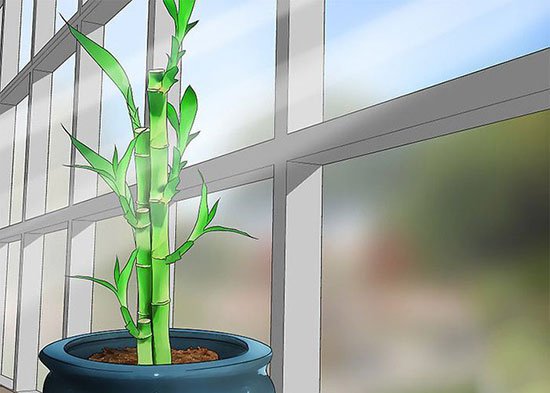
-
Soil
Lucky bamboo can be grown in well-drained, rich potting soil. The soil should be kept moist, but not soaked. Additionally, it can thrive well when housed in pebbles or simply a vase filled with water, as long as it has at least an inch of standing water at all times.
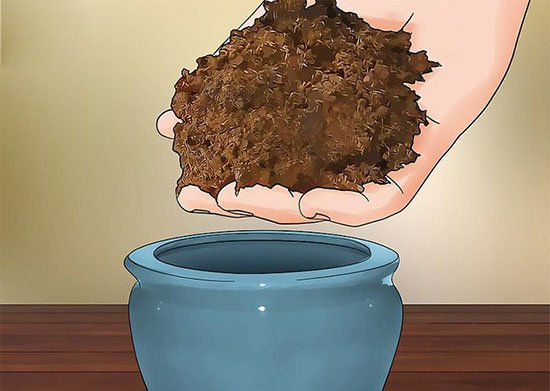
-
Water
Lucky bamboo is very sensitive to chlorine and other chemicals commonly found in tap water.2 Tap water is fine to use unless you have hard water (containing a lot of minerals). Because of this, it’s a good idea to water your lucky bamboo only with bottled or distilled water, or tap water that has been left out for 24 hours to allow the chlorine to evaporate.
If growing in a water vase filled with pebbles, change the water weekly to avoid any diseases and odors. Make sure that the water is always completely covering the roots. Add a bit of water every two to seven days as needed. Completely change the water every two to three months or more frequently if you find the water giving off a foul odor.
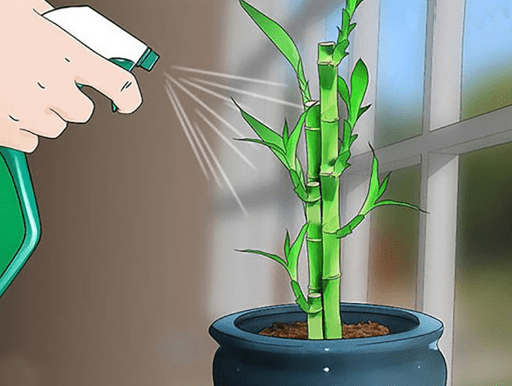
read more : Everything about rascus plant : How to Plant & care for them
-
Temperature and Humidity
As you may expect, lucky bamboo plants prefer warmer temperatures, ranging between 65 degrees Fahrenheit and 90 degrees Fahrenheit. Avoid placing your plant anywhere near a draft (hot or cold), in front of an air conditioner, heating vent, or by a drafty window. Average humidity is fine for your lucky bamboo plant, so don’t stress about increasing the levels in your home.

-
Fertilizer
A single drop of liquid fertilizer each month is plenty for most lucky bamboo arrangements. Alternatively, specialty lucky bamboo fertilizers are available. Plants grown in water will only need to be fed every other month or so using a very weak liquid fertilizer. Healthy lucky bamboo roots are red, so don’t be alarmed if you can see red roots floating in a glass vase.
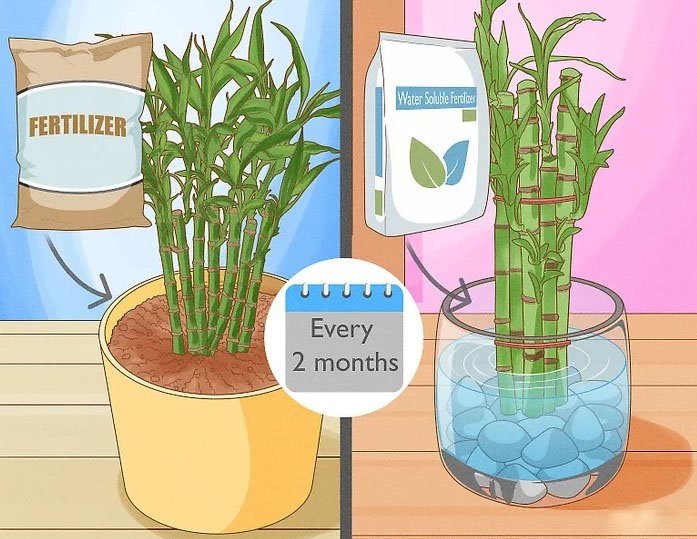
Pruning
Despite its complex appearance, lucky bamboo is not pruned and shaped in the same way as bonsai tree, with plant wire and judicious trimming. Pruning all of your houseplants is an important part of keeping them healthy. This is also true of your lucky bamboo.
Over time, most plants will become top-heavy, or intricate shapes will begin to lose their form but trimming helps keep that under control. In general, it’s not a good idea to cut the main stalk of lucky bamboo. Instead, cut the offshoots using sterile snippers. You can trim them back to within an inch or two of the main stem. New shoots will soon emerge, and the resulting plant will be bushier. To discourage new growth, dip the cut end in paraffin.
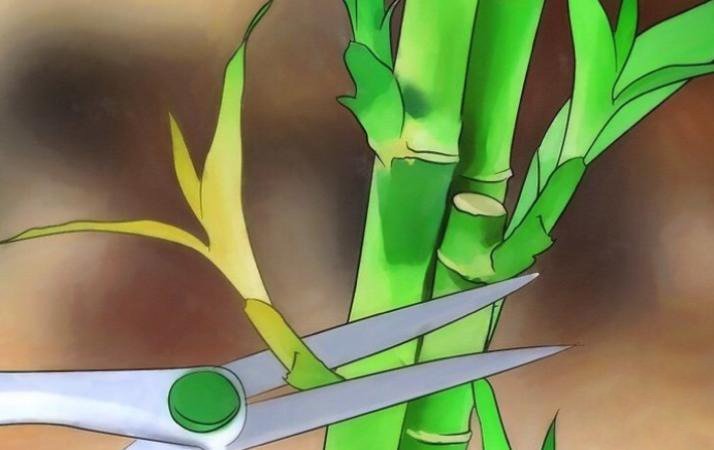
The shapes of lucky bamboo plants are formed not by trimming, but by rotating the plant stalks in front of a light source, which causes the plant to naturally grow toward the light. Professionals often grow stalks on their sides to create their distinctive spiraling shapes. But at home, this is a laborious process that takes patience and time to get right. It can be accomplished by placing the plants under a three-sided box, then paying close attention to their growth rates, and rotating the plants slowly and regularly.
read more : Everything about red willow : How to Plant & care for them
Propagating Lucky Bamboo
You can propagate lucky bamboo at any time using cuttings to create new plants for yourself or to give to someone as an auspicious gift. But the rooting won’t be shaped like the kind of plant you’d purchase.
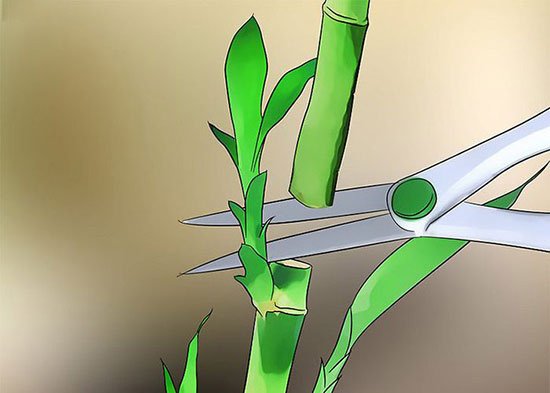
Take these steps to propagate lucky bamboo :
- Use a sterile, sharp cutting shear to take a stem cutting off the main stalk that has at least one leaf joint and trim the leaves to expose the growth nodes.
- Put the bare cutting into a container filled with enough distilled water to completely cover the bottom of the cutting.
- Keep the water clean and fresh as you watch for the development of red roots. Roots should appear in around 30 days.
- When the roots emerge, put the stalk in a decorative vase with water and pebbles or a pot with soil.
read more : Everything about palm plant : How to Plant & care for them
Potting and Repotting Lucky Bamboo
A lucky bamboo arrangement in a low dish or bowl should have at least one inch of space between the stalks and the edge of the vessel. This space allows the roots to spread out and support the plant. If your stalks are growing in a large glass vase, be sure the vessel is proportionate to the bamboo’s height and can support the stalks. The water level should be just enough to fully submerge the roots but should not rise to meet the stalks.
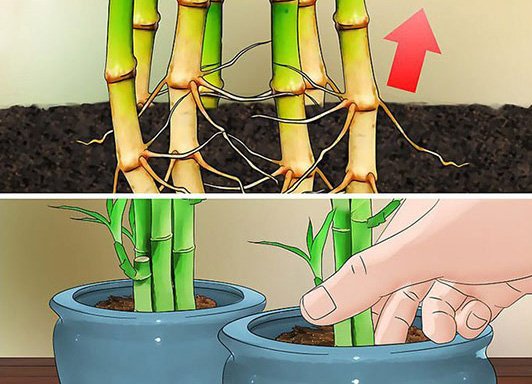
If your plant has outgrown its vessel, transplanting lucky bamboo is relatively easy. Take these simple steps to repot the plant :
- Start with a clean container that is slightly bigger than the current one.
- If the lucky bamboo is growing in a pot of pebbles, gently dig up a planted lucky bamboo.
- Clean the pebbles with water before placing them in the new container.
- Carefully add the bamboo plant and take care to nestle the roots within the pebbles. You may need to add more pebbles to cover the roots and support the plant.
- If your bamboo is growing in a pot of water without pebbles, simply remove the stalks from the water, place them in a larger container and refill the water to the same level.
Common Pests
Lucky bamboo is susceptible to the same insect problems as other indoor tropical plants. They can be treated manually (picking off bugs) or by the same methods you’d use on any other indoor plant. Watch for white mealybugs, green aphids, and spider mites. You can even wash the entire plant in a very mild liquid dish soap and water (rinse thoroughly) to remove bugs, as well as any moldy spots.
Common Problems With Lucky Bamboo
Although lucky bamboo is an easy-going plant, there are a few issues to be on the lookout for as it grows. If your lucky bamboo plant dies, it will not mean you are going to have bad luck, it simply means it didn’t receive ideal care or its lifespan has simply ended. The problems with this plant usually have to do with the quality of water used to grow and maintain the plant. Taking care to stay on top of changing the water and using the right quality water may eliminate any of the following problems.
-
Browning Leaf Tips
Chlorinated water or water with high levels of additives can cause leaf tips to turn brown and possibly kill the plant over time. Remove affected leaves with a sterile, sharp scissor. Remove dead leaves from the water so they do not rot because this may introduce bacteria.
-
Black Roots
There could be many reasons a plant develops black roots. The best course of action is to use small clean snips to cut the black roots away immediately and return the stalks to a container of new water.
-
Algae
If you notice algae growing in the water, it’s usually because the plant is potted in a clear vase, allowing light to penetrate, and encouraging algae growth. Just clean out the vase so it’s squeaky clean (use mild liquid dish detergent and water) and start again. You may want to switch to an opaque container if algae is a persistent problem.
-
Yellow Leaves
Yellow leaves on lucky bamboo usually indicate that the plant is receiving too much sun or too much plant fertilizer. Cut out the fertilizer and move the plant to a shadier location.
-
Brown Leaves
Brown leaves on lucky bamboo usually indicate dry air or polluted water. You can raise the humidity level by spraying the plant regularly. Make sure you’re using the appropriate quality of water in the container, as well.
-
Mushy Stalks
If the stalks themselves begin to rot or turn mushy and black, they are likely beyond saving. It also means the roots are dead or dying. Many reasons contribute to dead stalks, such as poor water quality, a fungus, or bacteria that was growing in the plant when it was received. Decaying stalks threaten any other stalks they are close to, so your best bet is to remove them at once. If you have surviving stalks, you will need to change the water and replace the stones that were in the container.
Iran dried bamboo shoots
If you want to create a dreamy atmosphere, the use of dried bamboo shoots is highly recommended. These dried shoots, while beautiful, is completely recyclable in nature and will always look beautiful in your space without being destroyed. The reasonable price of dried bamboo shoots has made the sale and purchase of dried bamboo shoots a great profit for the exporters and wholesalers of dried bamboo shoots .
read more : Drying natural flowers | Introducing 8 wonderful ways to dry flowers
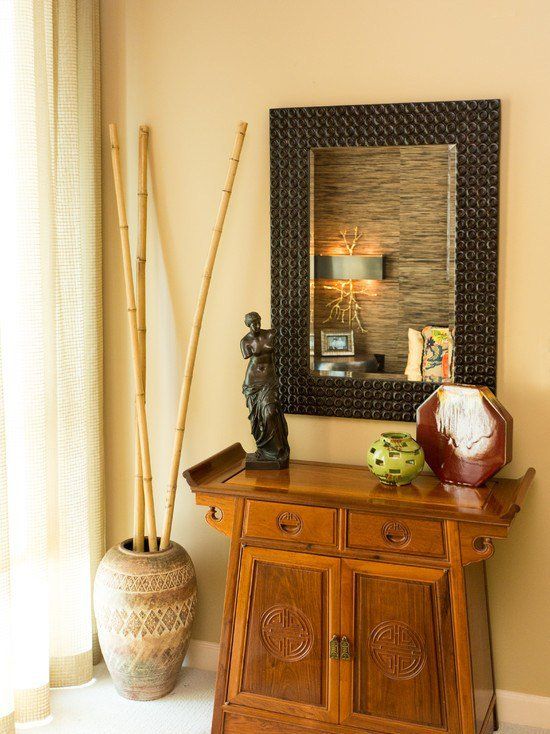
FAQ
Is lucky bamboo a good indoor plant ?
Lucky bamboo can grow indoors and outdoors. However, the best conditions for a lucky bamboo plant are indoors where it is warm but away from harsh sunlight.
How long will lucky bamboo live ?
Lucky bamboo is a short-lived plant and lives for one to two years. However, expect your plant to live a few years longer if you transfer it to a pot with soil.
Where should I place lucky bamboo in my home ?
According to feng shui design, placing lucky bamboo anywhere will inspire prosperity in that area. Specifically, put a lucky bamboo plant on your desk for career growth, in your entryway for new beginnings, in a bedroom for harmonious relationships, and the wealth area of any room (far left corner from the doorway) for financial abundance.
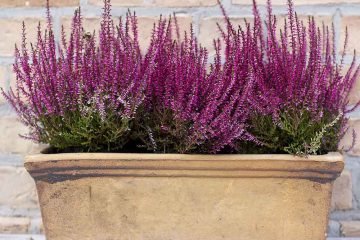
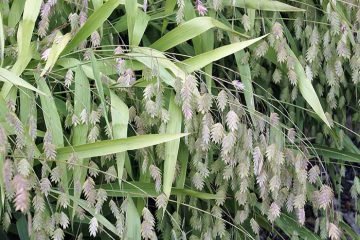
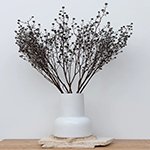
0 Comments